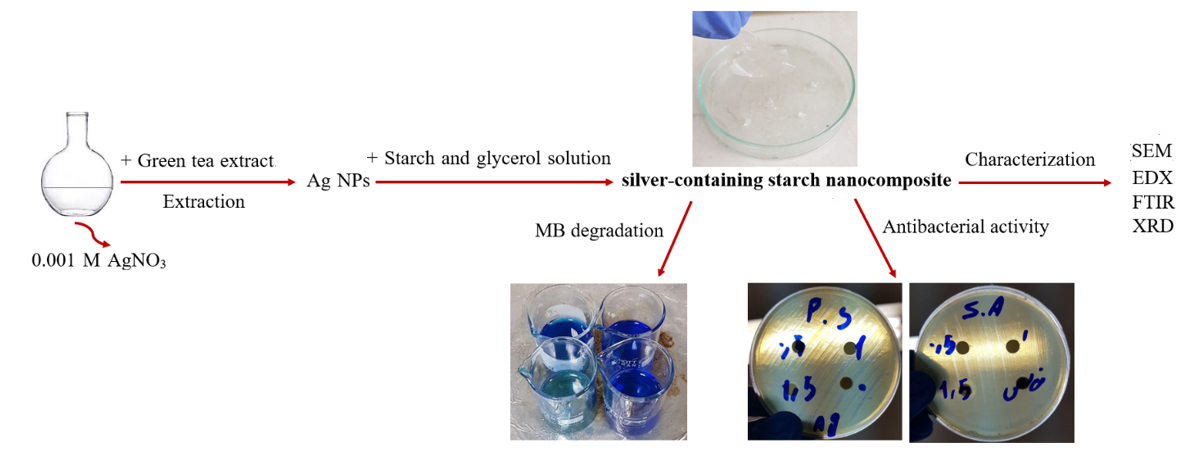Document Type : Original Research Article
Authors
1
Department of Nanochemistry, Faculty of Pharmaceutical Chemistry, Tehran Medical Sciences, Islamic Azad University, Tehran, Iran
2
Department of Medical Nanotechnology, Faculty of Advanced Sciences and Technology, Tehran Medical Sciences, Islamic Azad University, Tehran, Iran
3
Faculty of New Technologies Engineering, Shahid Beheshti University, Zirab Campus, Mazandaran, Iran
10.22034/nmrj.2024.01.007
Abstract
Objective(s): In this work, silver nanoparticles (Ag NPs) were synthesized by green tea plant extract as an easy, cost-effective, environmentally friendly, and reliable synthesis. The silver nanocomposite with different amounts of starch (0.5, 1, 1.5 g) were prepared. Then, the methylene blue (MB) dye degradation and the antibacterial activity of the nanocomposite were evaluated as an environmental challenge.
Methods: The samples were characterized using scanning electron microscope (SEM) for observation size and morphology, energy dispersive X-ray analysis (EDX) for determination elemental analysis, Fourier transform infrared spectroscopy (FTIR) for investigation functional groups, and X-ray diffraction analysis (XRD) for confirmation crystalline structure. The catalytic properties of the synthesized samples were studied in MB degradation.
Results: The maximum degradation (more than 90%) was related to Ag NP with 0.5 g of starch. The antibacterial activity of Ag NPs and nanocomposites was investigated against Staphylococcus aureus (S. aureus) as Gram-positive and Pseudomonas aeruginosa (P. aeruginosa) as Gram-negative bacteria. The samples indicated inhibitory activity with suitable inhibition zone and were more effective against S. aureus as compared to P. aeruginosa.
Conclusions: In general, the green synthesis of Ag NP-starch has good catalytic potential in MB degradation in an aqueous medium in a short time with high efficiency.
Graphical Abstract

Keywords
Main Subjects